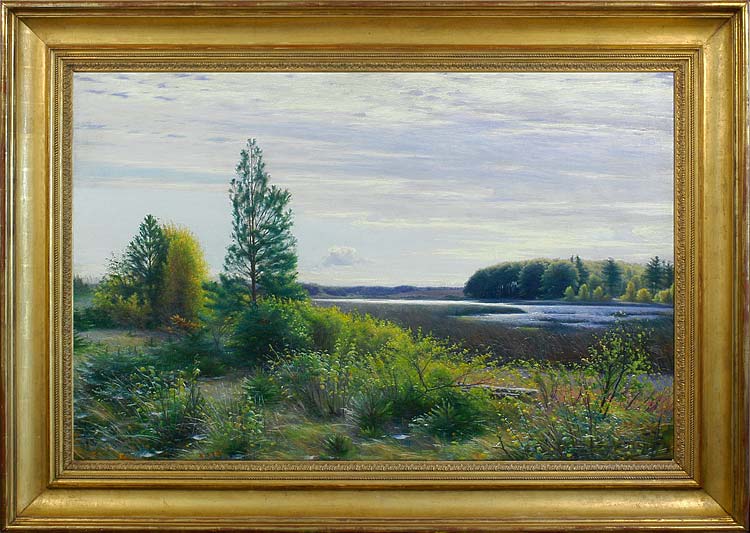This landscape is characteristic of Hansen’s art in its beautifully observed sky and hypnotically realistic foreground vegetation. The melancholy, slightly otherworldly light is also typical of his work; it floods the countryside beneath the high, striated cloudscape, and yet we are aware of dusk waiting in the wings, as the sense of coming autumn pervades the empty tracts of land and forest. Hansen’s landscapes are essentially unpeopled, yet they seem full of significance: brooded over by the divine presence we find in the work of Caspar David Friedrich, they become an allegorical expression of the transience and frailty of human life. The flicks of white paint which highlight the leaves and stalks in the foreground imitate Constable’s ‘snow’, which Hansen may have noted when he was studying in England; however, he uses it perhaps more realistically and to greater effect even than Constable himself.
Biographical details
Sigvard Marius Hansen (1859-1938) was born in Copenhagen to Anton Hansen, a carpenter. He studied porcelain painting at the Aluminia School of Art and then attended the Royal Academy of Art (1876-83), both in Copenhagen. He travelled through much of northern Europe, visiting England in 1878, when he studied ceramic and glass painting, and again from 1889-90.
He won the Sodrings Prize in 1886, the Danish Royal Academy Medal in 1886, 1893 & 1902, and the Bielke Medal in 1895, and worked as a painter at the Aluminia Porcelain Company until 1882. His paintings were shown at the Charlottenborg Palace from 1882-1938; the Nordic Exhibition, Copenhagen, between1888 & 1933; the Royal Academy, London, 1889-90; the Nordic Art Exhibition, Lübeck, 1895; and various other exhibitions in Copenhagen and Hamburg. A memorial exhibition was devoted to him in Sollerod, in 1974.


